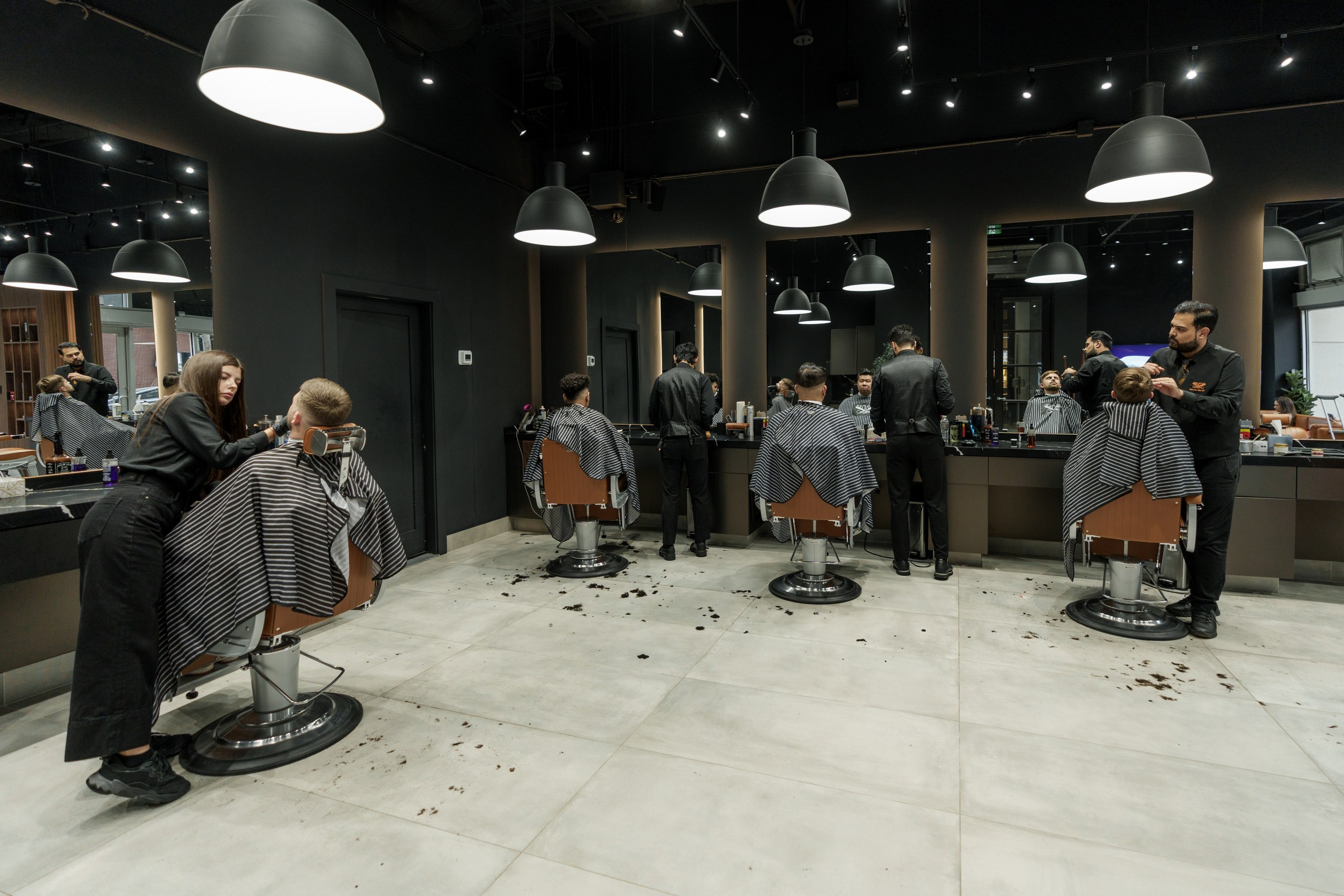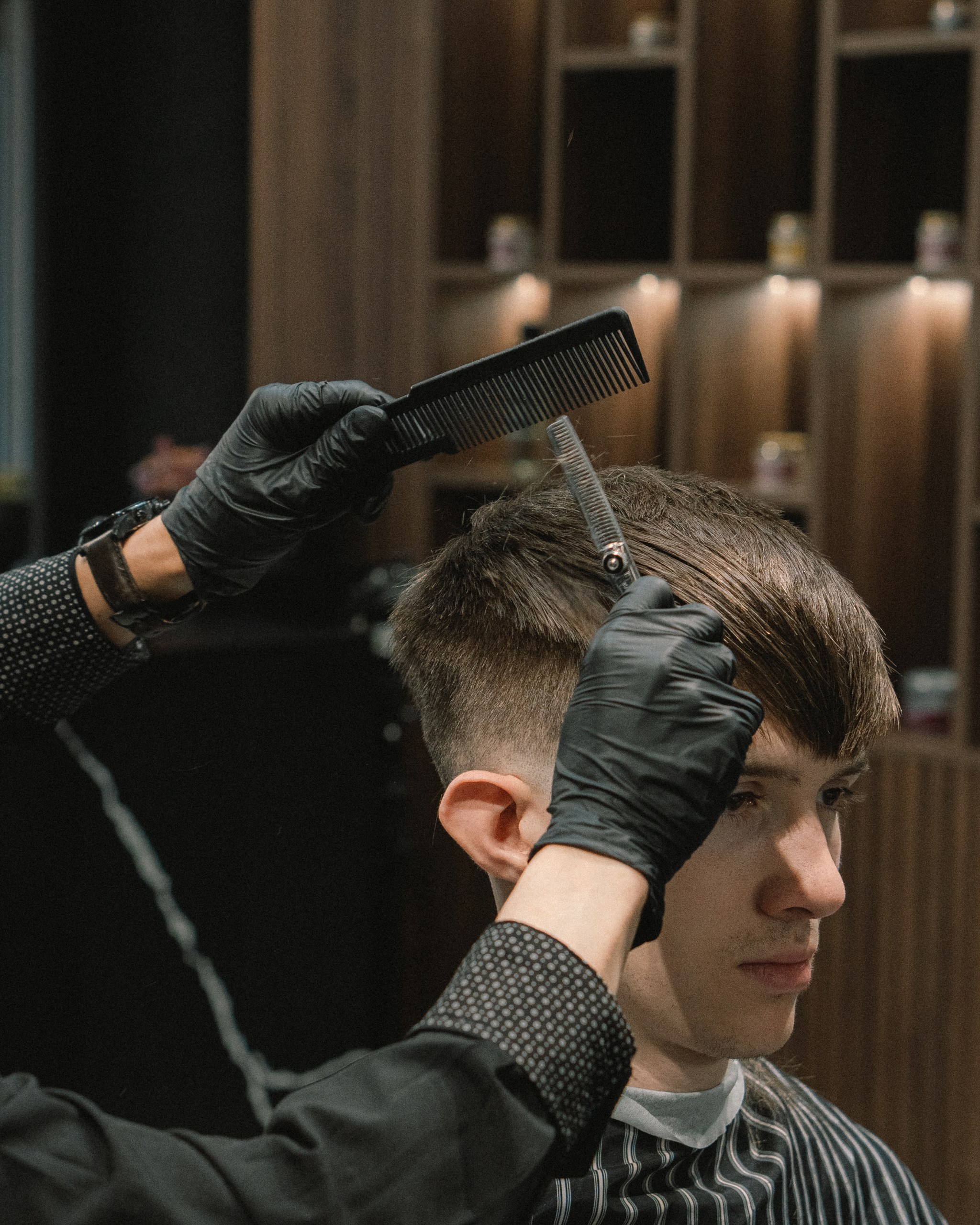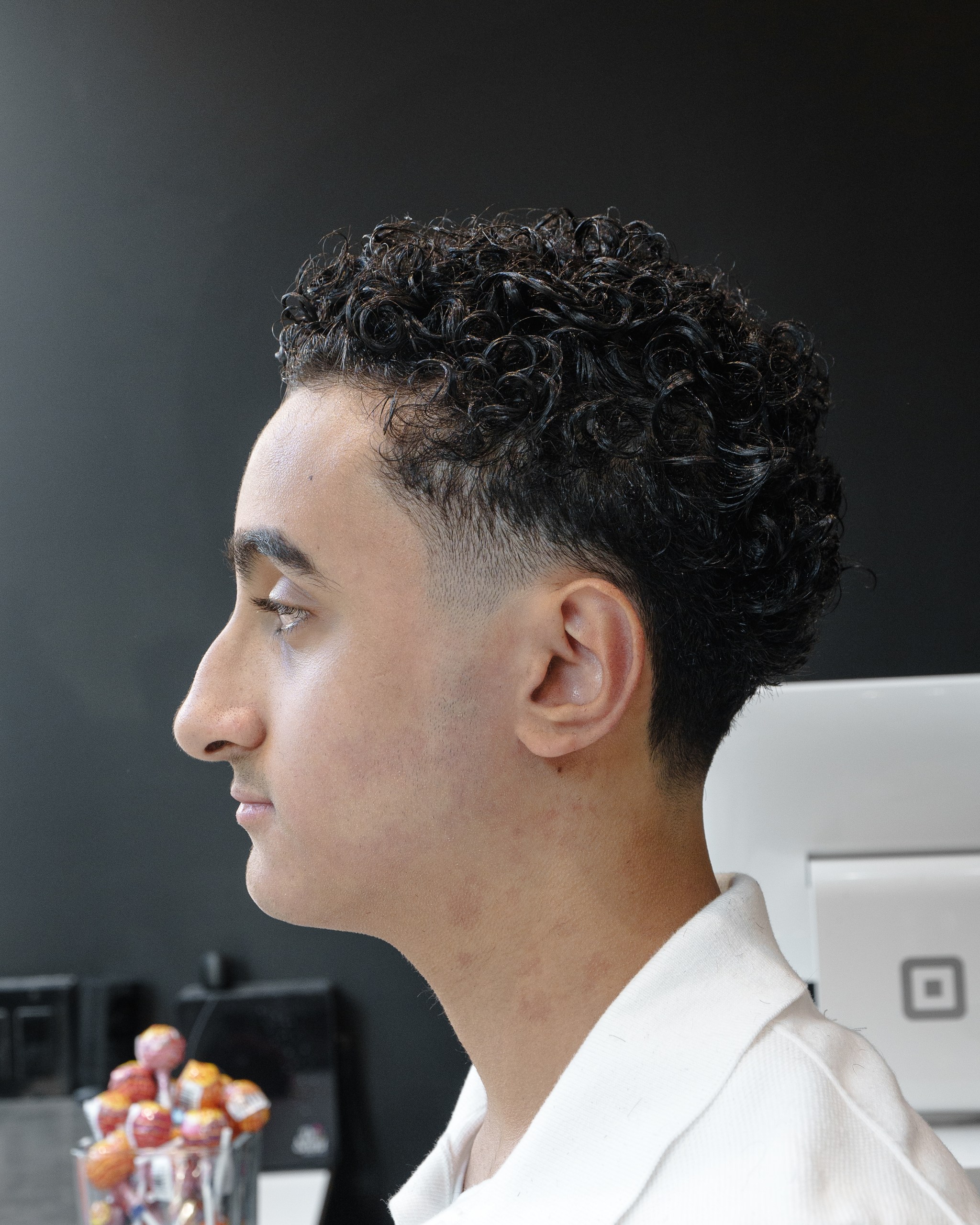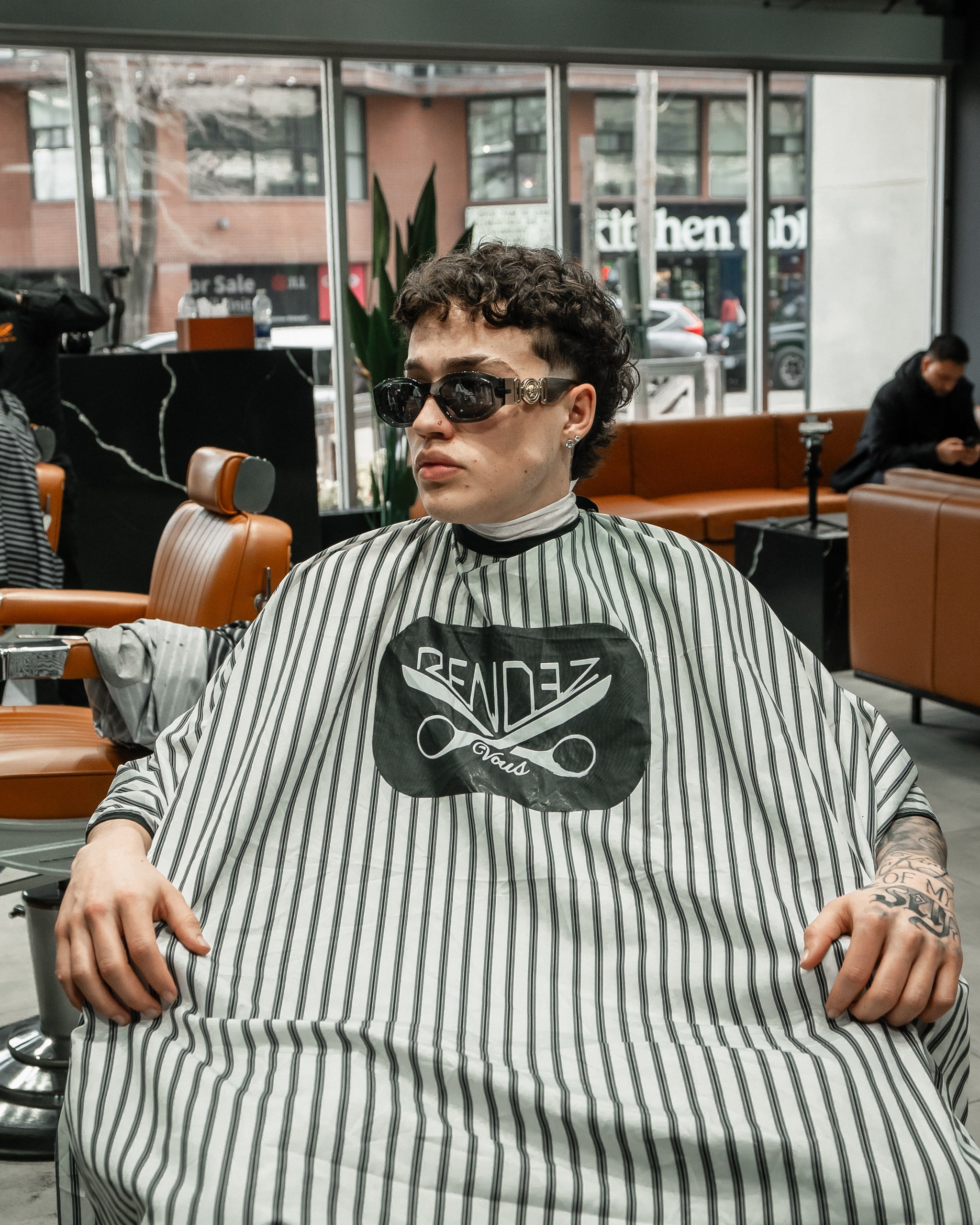At Rendezvous Barbershop, we see the effects of Toronto's summer heat on hair and scalp health every single day during peak summer months. Guys walk in looking frustrated, complaining that their hair feels greasy by noon, their usual products aren't working, and their scalp feels uncomfortable no matter what they do. The culprit? Toronto's July heat index is triggering biological responses in your scalp that completely change how your hair behaves.
Understanding what happens to your scalp when the mercury rises—and why Toronto's specific climate creates unique challenges—changes everything about how you should approach summer hair care.
The Science Behind Summer Scalp Changes
Your scalp isn't just skin with hair growing out of it—it's a complex ecosystem of oil glands, sweat glands, and hair follicles that all respond dramatically to temperature and humidity changes. When Toronto's July weather hits its stride, with temperatures climbing into the high twenties and humidity making it feel even hotter, your scalp enters a completely different operating mode.
Sebaceous gland activation: The tiny oil glands attached to each hair follicle are temperature-sensitive. As the heat index rises, these glands ramp up production significantly. What feels like a normal amount of oil in April becomes an oil slick by July, not because something's wrong with your scalp, but because it's responding exactly as designed to environmental conditions.
Sweat gland interference: Your scalp has more sweat glands per square inch than almost anywhere else on your body. In Toronto's July heat, these glands are working overtime, and the mixture of sweat and sebum creates a combination that affects how your hair looks, feels, and responds to products.
Follicle environment changes: Higher temperatures and humidity create a different environment around hair follicles. This affects everything from how quickly hair grows to how styling products perform throughout the day.
The key insight? Your scalp in July is operating under completely different conditions than your scalp in January, which means your hair care approach needs to change accordingly.
Toronto's Unique Summer Challenge
Not all summer heat is created equal, and Toronto's specific climate creates particular challenges that guys in other cities don't necessarily face.
The humidity factor: Toronto's summer humidity regularly sits between 60-80%, which is high enough to affect how your scalp's natural oils behave. High humidity prevents sweat from evaporating efficiently, creating a layer of moisture that mixes with sebum and creates that heavy, greasy feeling that's hard to wash away.
Temperature swings: Toronto summers aren't just hot—they're inconsistent. A cool morning can turn into a scorching afternoon, and your scalp is constantly adjusting oil production to match changing conditions. This creates unpredictable hair behavior that catches most guys off guard.
Urban heat island effect: Toronto's concrete and asphalt absorb and radiate heat, making the actual temperature your scalp experiences higher than what the weather app shows. Downtown Toronto can be 3-5 degrees hotter than the reported temperature, pushing your scalp's oil production even higher.
Lake effect humidity: Lake Ontario creates additional humidity that hangs over the city, especially during summer evenings. This persistent moisture affects how your hair dries and how long styling products maintain their effectiveness.
How Heat Index Triggers Oil Production
Understanding the biological mechanism behind heat-triggered oil production helps explain why your hair behaves so differently in summer.
Thermal regulation response: Your scalp produces more oil in hot weather as part of your body's cooling system. Sebum helps protect skin from UV damage and prevents dehydration, so increased production is actually your scalp trying to protect itself.
Hormonal influences: Heat stress can temporarily affect hormone levels, including those that regulate sebaceous gland activity. This is why some guys notice their hair gets oilier during heat waves, not just gradually over the summer.
Circulation changes: Higher temperatures increase blood flow to the scalp, delivering more nutrients to sebaceous glands and enabling higher oil production. It's like upgrading the fuel supply to an engine—everything runs faster and produces more output.
Follicle expansion: Heat causes hair follicles to expand slightly, which can make existing oil more visible and affect how products sit on your scalp and hair.
The Daily Oil Production Cycle in Summer Heat
Your scalp's oil production follows a predictable pattern during Toronto's hot summer days, and understanding this cycle helps you time your hair care routine for better results.
Morning baseline: You wake up with relatively controlled oil levels after your scalp has had several hours to regulate overnight in cooler, indoor temperatures.
Mid-morning activation: As you step outside and your scalp temperature rises, sebaceous glands begin increasing production. This is when most guys first notice their hair starting to feel different.
Afternoon peak: Between noon and 4 PM, when Toronto's heat index is typically highest, oil production reaches its daily maximum. This is why your hair might look fine at lunch but feel greasy by mid-afternoon.
Evening persistence: Even as temperatures cool, your scalp continues producing elevated oil levels for several hours. The accumulated oil and sweat from the day creates the heavy, uncomfortable feeling many guys experience in summer evenings.
Overnight recovery: Your scalp finally begins returning to baseline oil production during overnight hours, setting up the cycle to repeat the next day.

How Humidity Amplifies the Problem
Toronto's summer humidity doesn't just make the air feel heavier—it fundamentally changes how your scalp's natural oils behave and how effective your usual hair care routine becomes.
Prevented evaporation: Normal sebum production relies on some natural evaporation to maintain balance. High humidity prevents this evaporation, causing oils to accumulate on your scalp and hair rather than dissipating naturally.
Product interaction changes: Styling products that work perfectly in dry conditions often fail in humid weather because they can't interact properly with the moisture-heavy environment around your hair.
Bacterial environment shifts: The combination of oil, sweat, and humidity creates conditions where scalp bacteria multiply more rapidly, potentially leading to odor, irritation, or dandruff issues that don't exist in cooler months.
Cleansing challenges: High humidity makes it harder for shampoos to remove accumulated oils and sweat effectively, often requiring different cleansing approaches than you use the rest of the year.
The Sweat and Sebum Combination Effect
The real problem isn't just increased oil production—it's how sweat and sebum interact in Toronto's summer heat to create hair and scalp issues that pure oil production wouldn't cause alone.
Chemical interaction: Sweat contains salts and proteins that, when mixed with sebum, create compounds that are harder to remove than either substance alone. This mixture can make your hair feel dirty even immediately after washing.
pH disruption: The combination of sweat and oil changes your scalp's natural pH balance, affecting how hair follicles function and how products perform.
Styling interference: The sweat-sebum mixture creates a coating on hair that prevents styling products from adhering properly, explaining why your usual routine stops working in summer heat.
Accumulation patterns: This mixture tends to accumulate in specific areas—the crown, behind the ears, and along the hairline—creating uneven greasiness that's difficult to manage with standard washing techniques.
Product Performance Changes in Heat
The same products you rely on during cooler months often perform completely differently when Toronto's July heat kicks in, and understanding these changes helps you adjust your routine accordingly.
Pomade and wax behavior: Oil-based styling products become softer and less effective in high heat, often melting out of your hair by midday. Water-based alternatives typically perform better in summer conditions.
Shampoo effectiveness: Your regular shampoo might not be strong enough to cut through the increased oil and sweat production, requiring either more frequent washing or stronger formulations during peak summer months.
Conditioner absorption: High humidity and increased oil production can prevent conditioners from absorbing properly, leading to buildup that makes hair feel heavy and look dull.
Leave-in product challenges: Products designed to stay in your hair all day often can't compete with the increased oil and sweat production, requiring reapplication or different formulations entirely.
Scalp Comfort and Health Considerations
Beyond just appearance issues, Toronto's summer heat creates scalp comfort and health challenges that affect your daily quality of life.
Heat rash potential: The combination of increased oil production, sweat, and humidity can clog pores and hair follicles, leading to scalp acne or heat rash that's both uncomfortable and visible.
Odor development: The bacteria-friendly environment created by oil, sweat, and humidity can lead to scalp odor that regular shampooing doesn't always eliminate.
Irritation and sensitivity: Scalps that handle normal conditions fine might become sensitive during peak heat periods, reacting negatively to products that usually work well.
Follicle health: Prolonged exposure to the sweat-sebum mixture can irritate hair follicles, potentially affecting hair growth and health over time.
Timing Your Hair Care for Toronto's Heat
Understanding how Toronto's daily heat patterns affect your scalp helps you time your hair care routine for maximum effectiveness.
Morning washing strategy: Washing your hair in the morning gives you the cleanest possible start before oil production ramps up, but the effects may not last through peak heat hours.
Evening cleansing benefits: Washing at night removes the entire day's accumulation of oil and sweat, allowing your scalp to recover overnight in cooler, controlled conditions.
Mid-day maintenance: Quick cleansing or oil-absorbing techniques during peak heat hours can extend the effectiveness of your morning routine.
Weekend intensive care: Using stronger cleansing or clarifying treatments during weekends helps reset your scalp after a week of battling Toronto's summer heat.
Environmental Factors Beyond Temperature
Toronto's summer environment includes factors beyond just heat that affect scalp oil production and hair behavior.
Air quality impacts: Summer smog and pollution can mix with scalp oils and sweat, creating a layer of grime that's harder to remove than natural oils alone.
UV exposure effects: Direct sunlight triggers additional protective responses from your scalp, including increased oil production and changes in follicle behavior.
Air conditioning transitions: The constant movement between hot outdoor air and cold indoor spaces creates temperature shock that can disrupt normal oil production patterns.
Chlorine exposure: Summer pool season introduces chlorine, which strips natural oils aggressively, often triggering rebound oil production that makes hair feel greasier than before swimming.
Seasonal Adaptation Strategies
Smart Toronto guys learn to adapt their hair care approach specifically for summer heat rather than fighting against their scalp's natural responses.
Product rotation: Switching to lighter, heat-appropriate products during summer months rather than trying to make winter formulations work in July heat.
Frequency adjustments: Increasing washing frequency during peak heat periods, then scaling back as temperatures moderate.
Application timing: Adjusting when you apply products based on when your scalp oil production is most controlled.
Preventive measures: Using techniques to minimize heat exposure and oil production triggers rather than just treating the results.
The Recovery Period
Understanding how your scalp recovers from peak summer heat helps you transition your routine as Toronto's weather begins to moderate.
Gradual normalization: Oil production doesn't immediately return to normal when temperatures drop—it takes time for sebaceous glands to adjust to new conditions.
Routine transition timing: Knowing when to switch back to cooler weather products and techniques prevents over-correcting as conditions change.
Damage assessment: Evaluating any heat-related damage to hair or scalp health and addressing it before winter weather creates different challenges.
The Bottom Line
Toronto's July heat doesn't just make you uncomfortable—it fundamentally changes how your scalp operates. Understanding these changes and adjusting your hair care approach accordingly makes the difference between fighting your hair all summer and working with your scalp's natural responses.
The guys who look great all summer aren't necessarily blessed with better hair genetics—they're the ones who understand how heat affects their scalp and adapt their routine to match Toronto's challenging summer conditions.
Conclusion
Book your appointment today and learn the techniques that keep you looking fresh even during Toronto's hottest days. For summer hair care that actually works in Toronto's climate. We help you stay sharp when the heat is on, because when you look good, you feel good.













